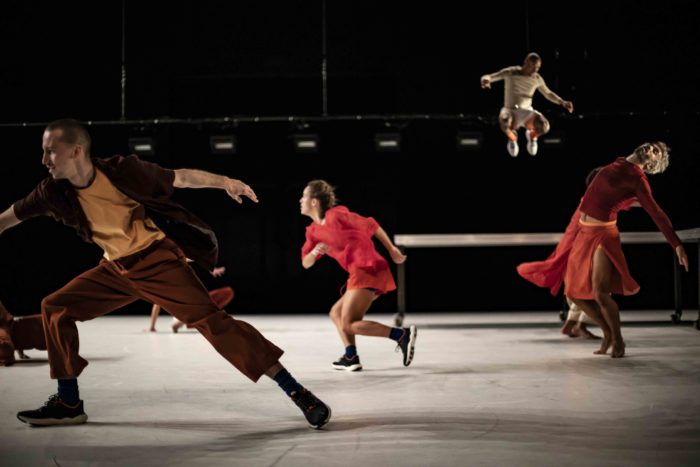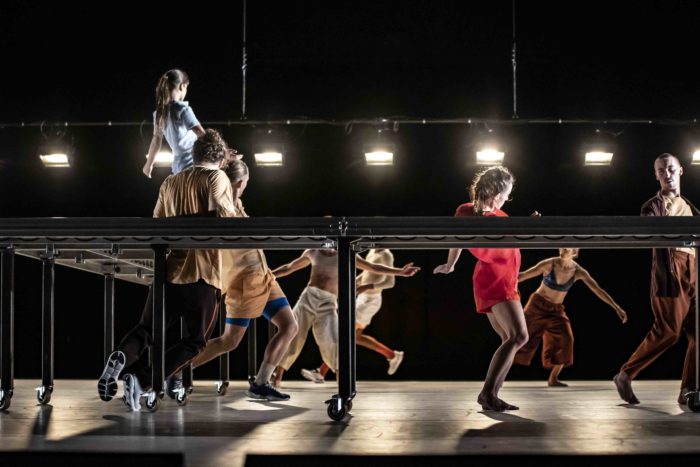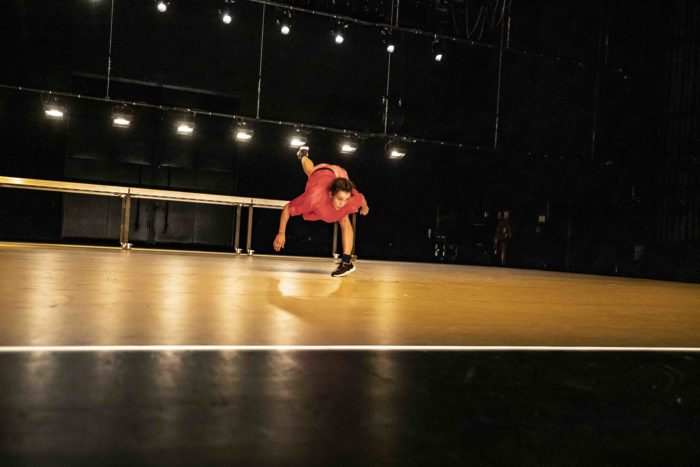

Saltarines
Cie Samuel Mathieu
Premieres the 7th and 8th of November 2022
Propos
Although linked, dance and circus have not always been on an equal footing. In antiquity, "acrobatic dances were part of the choreographic register of dithyrambic dances, that is to say, passionate, exposed, exalted and animated, in contrast with the "beautiful dances", calm, decent, moderate, severe and measured". (PEIGNIST Myriam, Histoire anthropologique des danses acrobatiques, 2009, p.30)

The desire is to bring together ten artists, to create a movement en masse, a gathering that becomes a body, a resistance to history.
At the heart of this group is the chorus, the collective being that I want to summon while inflating the differences. Making a body, once again, in the power of the leap, in the evolution of the rhythm until the pulse is racing, until they enter a “trance” in unison in a dithyrambic dance.
In this renewed exaltation, it is about allowing oneself, granting oneself the right to traverse and to incarnate an outward movement, to transgress the rules, to transcend and extenuate the body, pushing it to a paroxysm of itself. It is about making noise, it is about being noticed and taking a position.
(…) Since the beginning of the 16th century, there has been a clear difference between the leap step and the danced step, which enables us to distinguish the history of the ballerina from that of the saltarine:
“While the word ballerina invokes the verb ‘to dance’, that of the acrobat emphasizes the soaring leap, the contortion and the ‘turn of the hip’, connected to an ardent moment, hence this nuance between ‘saltarine’ and ‘ballerina’. Acrobatic dances stage a body that is reaching a ‘peak of gesturality’, qualitatively pushed to the extremes in a dynamic equilibrium, where it is a question of ‘un-dancing’.” Myriam Peignist
Acrobatics is thus something forbidden to the dancer, and insofar as dance was codified, it was to become completely excluded. (…) Academicism gains ground, and the acrobatic interludes gradually disappear from the ballets. With the creation of the Royal Academy of Music and Dance in 1661, the acrobat and the dancer become increasingly separated not only in terms of technique but also geographically.
Extract from Interprètes au travail: danseurs et acrobates, de l’indiscipline à la désobéissance - Agathe Dumont

Casting
Conception and Choreography : Samuel Mathieu et Fabienne Donnio
Dancers : Martin Mauriès, Steven Chotard, Louison Valette, Vladimir Duparc, Cindy Villemin, Enzo Blond, Elie Ficot, Salomé Rebuffat, Marius Fouilland, Julien Maslage and with the participation of Jeanne Mathieu
Composer : Maxime Denuc
Scenography : Christophe Bergon
Light designer : William Lambert et Arthur Gueydan
Coproducers
Coproduction:
Scène nationale d'Albi
Théâtre Molière Scène nationale de Sète
Le Parvis scène nationale de Tarbes
La Place de la Danse CDCN Toulouse Occitanie
Accueil Studio :
CCN & Vous ballet du Nord
Residency :
Coproduction :
Scène nationale d'Albi
Théâtre Molière Scène nationale de Sète
Le Parvis scène nationale de Tarbes
La Place de la Danse CDCN Toulouse Occitanie
Accueil Studio / coproduction :
CCN & Vous ballet du Nord
Viadanse CCN de Belfort
Accueil en résidence :
L'Escale - Tournefeuille
La Lattitude 50 - Marchin/Belgique
CCN & Vous ballet du Nord
Ring scène périphérique
Scène nationale d'Albi